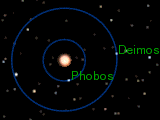Cisco’s vPC technology is similar to Dell’s VLT; it enables an access/leaf switch or server to have single LAG connecting up to two separate switches. This allows for an non-blocking, multipathing scenario. You can read more about Dell’s VLT technology and its advantages on my prior blog, Dell Force10 – Layer 2 Multipathing via Virtual Link Trunking (VLT) In this blog, I will configure Cisco vPC between two Cisco Nexus 5548UP switches [NX-OS 5.1(3)N2(1)] down to a third ToR Cisco Nexus 5548UP switch [NX-OS 5.1(3)N2(1)]. I will then replace the third Cisco Nexus 5548UP switch at ToR with a Dell S4810 switch [FTOS 9.0]. Continue reading
Cisco vPC with Dell S4810 at ToR
FCoE with Dell S5000 Converged Switch and Dell MXL Blade Switch [Video]
Check out the latest Dell S5000 converged switch video which demonstrates FCoE with the Dell S5000 converged switch and the Dell PowerEdge M1000e chassis w/ MXL blade switch. The Dell S5000 switch is configured in NPIV Proxy Gateway mode and the Dell MXL blade switch is configured for FCoE Transit. Additionally, the FCoE and LAN connectivity is tested by sending LAN and SAN traffic from the Dell PowerEdge M620 blade server. Multipathing over dual fabrics is also demonstrated by logging into the Fibre Channel switches and observing the FC traffic passing over both fabrics. Just see the second video posted on the following page on Dell’s website here, Dell Tech Center YouTube channel here, or just see the video directly below. Continue reading
IT Certifications, Innovation, and Career Growth – Making the Right Decisions

I often get asked, “What certification should I get next?” There is no right way to answer this question without a deeper analysis of why a certification is being sought in the first place. I’ll focus specifically on IT certifications and direct this article more towards technologists/engineers/tech entrepreneurs. In my opinion, there are too many IT certification hoarders jumping from one certification to the next; I have some friends who definitely fall in this category. I also have my share of certifications as well (Cisco, VMware, etc.), although by no means is IT certifications my first priority or even my second priority. These days it seems like just about every vendor and third party is coming out with some sort of certification and cashing-in on this ‘IT certification’ phenomena. So, do IT certifications really help and should you invest the time and money to get one? Continue reading
Understanding Cisco Nexus 2000 Series Fabric Extenders
FCoE Transit with the Dell PowerEdge M I/O Aggregator Blade Switch
 The Dell PowerEdge M I/O Aggregator (IOA) blade switch is pretty cool. It looks similar to the Dell MXL blade switch and even uses the same FlexIO modules in its two FlexIO module slots. As with the Dell MXL switch, it also has 32 internal ports for blade servers. The main difference from the MXL switch is that the IOA is a layer 2-only switch meant to be deployed as-is or ‘zero-touch’ from the engineer. It is geared more towards the server admin rather than the network admin as it requires little network configuration knowledge and is pretty much plug-and-play! In this blog I talk specifically about FCoE transit on the Dell IOA blade switch [FTOS 8.3.17.4]. Continue reading
The Dell PowerEdge M I/O Aggregator (IOA) blade switch is pretty cool. It looks similar to the Dell MXL blade switch and even uses the same FlexIO modules in its two FlexIO module slots. As with the Dell MXL switch, it also has 32 internal ports for blade servers. The main difference from the MXL switch is that the IOA is a layer 2-only switch meant to be deployed as-is or ‘zero-touch’ from the engineer. It is geared more towards the server admin rather than the network admin as it requires little network configuration knowledge and is pretty much plug-and-play! In this blog I talk specifically about FCoE transit on the Dell IOA blade switch [FTOS 8.3.17.4]. Continue reading
Is Life and Work Like a Big Game of Chess?
Chess is fascinating. I always tell people it reminds me of real life in the way of developing a strategy, reading your competition and thinking several steps ahead of them, and of course battling it out for that final checkmate. Chess is believed to have originated around 600 AD in what is now Afghanistan or India and indeed was much based on warfare where what we today call the pawn, knight, bishop, and rook represented the four divisions of the military: infantry, cavalry, elephantry, and chariotry. Continue reading
Investing Into Entrepreneurs More than Ideas/Products?
 I’ve seen it many, many times where investor(s) invest into an idea because they have some belief in the idea/product but more belief in the entrepreneur(s) behind it. This isn’t to say that investors/angels just throw money down on worthless ideas/products simply because of the person behind it. Rather, it’s the person/entrepreneur behind the pitch that can make or break a deal. Obviously, numbers are very important: market size, sales, profits, debt, customer base, etc. However, many times, a venture can be very early in its lifecycle or the numbers can be good but assurance is needed in the individual calling the shots and steering the ship on its course to expansion and financial success. Continue reading
I’ve seen it many, many times where investor(s) invest into an idea because they have some belief in the idea/product but more belief in the entrepreneur(s) behind it. This isn’t to say that investors/angels just throw money down on worthless ideas/products simply because of the person behind it. Rather, it’s the person/entrepreneur behind the pitch that can make or break a deal. Obviously, numbers are very important: market size, sales, profits, debt, customer base, etc. However, many times, a venture can be very early in its lifecycle or the numbers can be good but assurance is needed in the individual calling the shots and steering the ship on its course to expansion and financial success. Continue reading
Cisco Nexus 5548UP – Configuring the Management Interface
This is a relatively simple blog on configuring the Cisco Nexus 5548UP management interface. When Cisco moved away from IOS to NX-OS for the operating system on their new Nexus datacenter switches, some of the commands and syntax for even the simplest tasks have changed. For easy reference for a common task such as setting the management interface I decided to write this quick blog. The network diagram is below. I am using a Dell S4810 [FTOS 9.1] for my management switch to which both the Dell PowerEdge R710 server and Cisco Nexus 5548UP [NX-OS 5.2(1)N1(1b)] connect. I also use a 1000Base-T SFP transceiver to convert the Dell S4810 fiber port to copper, so I can connect it to the management port of the Cisco Nexus. Continue reading
The Moons of Mars – Phobos and Deimos

Phobos and Deimos orbiting Mars




 Twitter
Twitter LinkedIn
LinkedIn Youtube
Youtube RSS
RSS